Blog
October 15, 2014
A Magic spell on Rubondo Island
By Eric Frank
Rubondo Island National Park is an example of the foresight and visionary genius of late President Julius Nyerere — the man who led Tanzania to independence and onwards to become one of Africa’s leading conservation economies. Nyerere’s commitment to preserving the nation’s natural heritage is evident in the splendour of the country’s national parks and also in the preservation of the enormous natural wealth that lies above and below the waters of Lake Victoria — Rubondo Island National Park. The flight between Mwanza and Rubondo Island is approximately 25 minutes and in that time one can only marvel at the vast expanse of water and many islands that pass below the aircraft’s wings.
Sitting in front with the pilot is a must when you come in to land on the island. The approach to the airstrip, which looks like an extended cricket pitch carved out of the jungle, is over the lake and the touchdown is an unexpected jolt that leaves you wondering if you have just had a near death experience. Isn’t this just what you would expect when setting off on an adventure into the unknown?
Habibu Kissio—the senior guide at Asilia’s Rubondo Island Camp is at the airstrip to meet my wife, Tertia and myself and after a glass of chilled bubbles we leave for the camp that is only a few minutes away. The rocky road winds through a dense, dark forest that is constantly cut back to prevent it from taking over the road. In a shaft of light that breaks through the forest canopy we see a bushbuck ewe lift her head to watch us pass. On arrival at the camp we are met by Henk and Janine the camp’s managers, and shown to our chalet.
The large bedroom looks out over what appears to be a well-manicured lawn and then onto the shimmering surface of Lake Victoria. A small dhow and motorboat sway gently at their moorings and the water lapping at the shore sounds like we’re at the seaside. The only difference is that each wave looks and sounds exactly the same as the previous one. As we are escorted back to the chalet after dinner that night we discover that the team that keep the lawn trimmed weigh in at about a ton each, grunt continuously and have a reputation for killing more humans than any other animal on the planet. Fortunately they ignore us and we slip into the room as quickly as we can.
A golden peach-coloured sunrise introduces the new day. And it’s magnificent. The lake is flat and glassy—perfect for a cruise to get a closer look at Rubondo’s famous birdlife and crocodiles. Habibu meets us at the beach after breakfast. He introduces us to Deus the skipper of the boat. Deus is a rehabilitated poacher and therefore knows the waters around Rubondo Island intimately. Habibu tells us we are heading off to a bay where many species of birds gather and en route we’ll stop off at Crocodile Island. As we approach this nondescript rocky outcrop, some distance from the shore, the mother of all crocs oozes itself into the water, heads towards us and then quietly disappears under the surface. Tertia immediately moves towards the middle of the boat and I imagine she is thinking that falling overboard at that moment would dramatically cut short any plans she had for the future. The thought of it makes me shiver and I squeeze her hand reassuringly. The crocodiles virtually lie on top of each other and I can find no rational reason why so many should gather on this barren pile of rocks so far from the shore. Judging by their leering looks and toothy smiles, I speculate that they come here to hang out, soak up the sun and look as disgustingly evil as they possibly can.
Some time later, as we slowly cruise along the shoreline, I am amazed at the diversity and amount of birds we see. Egrets are by far in the majority, but we also see African Darters, Open Billed Storks, Kingfishers, Fish Eagles and some migrating European Bee Eaters that have stopped over on the island to rest. Habibu is an excellent guide. Both Tertia and I only have a rudimentary knowledge of birds and he succeeds brilliantly in getting us interested in learning more about them. I am particularly fascinated to learn that the male fish eagle is smaller than the female and that his call is more hysterical and high-pitched. In no time I can able to identify which is which by ear.
Before coming to the island I was asked to photograph the Camp’s new tree house that was soon due to be launched in the media. The cherry on top was that Tertia and I would also be the first guests to spend a night there. Getting to the tree house is easy. You simply walk to the end of the beach and follow a path that takes you to a wooden walkway. The walkway leads you up a gentle slope along the side of a hill and onto a wooden deck with safety railings and a generous canvas canopy. A king-size bed draped with a silky mosquito net holds centre-stage and the surrounding views of the forest canopy and Lake Victoria are exquisite. A woven wooden screen, that also serves as a headboard, separates the en-suite bathroom and flush toilet from the sleeping area. The bathtub is a showstopper. Made entirely out of gleaming copper, it looks as if it could have been created for the likes of Lady Gaga. Set against a wall of hand-packed rocks, the bathroom area seamlessly merges with the surrounding hillside environment. Hot and cold water can be accessed via a showerhead as big as a soup plate or vintage brass taps. As the sun sets I manage to photograph as much of the tree house as I can. In doing so I realise that a photograph will never do justice to this fantastical out-of this-world place. Then dinner arrives, with chilled sparkling wine, a full moon and a symphony of night sounds. In the very early hours of the morning I wake up to the sounds of branches breaking nearby. Elephants? Before I know the answer I drift off to sleep again.
My father was a keen sport fisherman and his love for things piscatorial lives on in me. Therefore, it goes without saying, that the thought of catching one of Rubondo Island’s monster-sized Nile Perch was high on my agenda for this trip. Once again Habibu, Deus and I set off, this time for Rubondo’s renowned fishing grounds. The most common technique for catching Nile Perch is to troll large colourful lures, normally used to catch tuna, about 20 metres behind the boat as it cruises at a slow speed. In no time the rod next to me bucks and bends. As I strike and set the hook, Deus cuts the engine. Unfortunately, the action is short-lived and the fish throws the lure and joins the legions of other fish I have failed to land successfully. Some time passed before we caught two reasonably sized fish in quick succession and released them back into the water. Then things went quiet, very quiet. The rolling of the boat, the reassuring rumble of the motor and the sun on my back conspired to lull me into a state of semi-conscious slumber. Suddenly Habibu shouted “fish!” I snapped upright and grabbed the bending rod. This time there was real weight at the end of the line and it didn’t budge. I turned to Habibu and suggested we had snagged a rock or a submerged tree. He half-smiled and in his quiet, soft-spoken manner reassured me it was a fish. Then all hell happened at once, the rod nearly leapt out of my hands and line peeled off the reel at a blistering pace. “Fish my arse,” I yelped. “It’s a bloody battle tank!” Bringing the fish to the boat took time and when I eventually caught sight of it I gasped. It was monstrous! With a lot of effort we hauled it onto the boat where it was measured. I asked Deus and Habibu to hold it so that I could take a photograph. It is probably the best bad picture I have ever taken because I simply couldn’t get back far enough to fit all the stars of the show into the frame. (Habibu my friend, I sincerely apologise for cutting off the top of your head). We then released the fish back into the water and I did the first thing real men do under such circumstances —I had a beer!
Supplies destined for Rubondo Island Camp are delivered weekly in Muganza the nearest mainland town to the island. These are then fetched by boat and brought back to the camp. Asilia owns a vegetable garden in Muganza and a local gardener grows fresh vegetables, herbs and fruits for the camp’s kitchen. Tertia and I decide to join Michelle Attala on an excursion to the garden and, because Saturday is market day in the town, we’ll explore that too. The boat ride is relatively short and we’re there in no time. The vegetable garden is larger than I imagined and the soil is dark and rich. Despite the fact that most of the crops are not ripe and ready to be harvested we still manage to collect tomatoes, lettuce, parsley and rocket. The Saturday market however is an entirely different experience. It appears that few foreigners visit Muganza and Tertia, who shows more than a passing interest in purchasing some wax print fabrics, is a hit with the fabric stall owners. Shopping in an African market takes decisiveness. If you show uncertainty you will be bombarded with a host of new options to buy and your entire purchasing strategy falls apart. On occasions when this happens, Tertia suddenly (and very dramatically) asks me what I think. This draws the attention of the stall owners onto me. While I ponder, fuss and compare the merchandise she uses the time to make up her mind. Finally we leave the market with two lengths of fabric and head back to the boat. It is our last day on Rubondo Island and tomorrow Tertia flies home and I leave for Olakira Camp in the northern Serengeti.
We spent a magical week at Rubondo Island Camp. The location and accommodation is perfect for exploring the island and the management and staff are warm, welcoming and helpful. Rubondo Island National Park covers an area of 457 km² (including the main island, surrounding water and 11 small islets). 85% of the island is covered by dense forest and the balance comprises of savannah, papyrus swamps and open woodland. Wildlife includes elephant, giraffe, hippo, crocodile, sitatunga, bushbuck, suni, wild chimpanzees, black and white colobus monkeys and over 200 species of birds.
A one-ton lawnmower and manure spreader
The African Darter (a rare visitor to Rubondo Island)
Early morning view of Lake Victoria from our bedroom
Rubondo Island Camp Accommodation
European Bee Eaters
Heroic Fish Eagle
The amazing Open Billed Stork (the gap in his beak helps him crush freshwater mussels)
Butter couldn’t melt in that mouth
Habibu, Deus and the Battle Tank
The Tree House bedroom
The Tree House en-suite bathroom and tub
Muganza photographic studio
Fabric emporium
The Asilia Vegetable garden
![]()

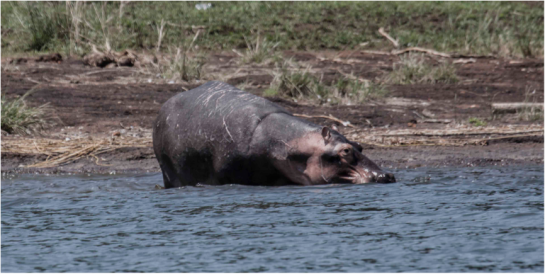
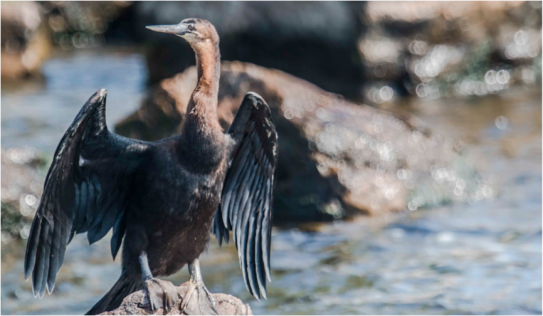
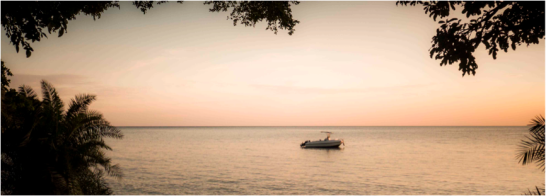
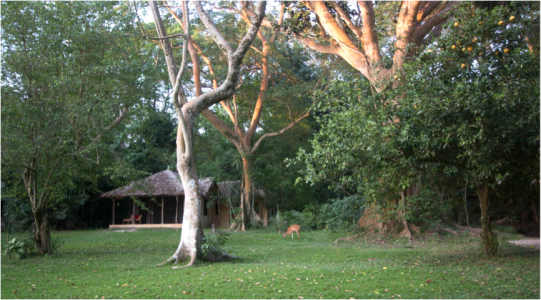
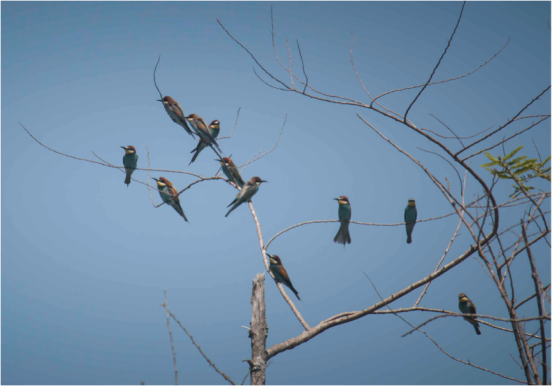
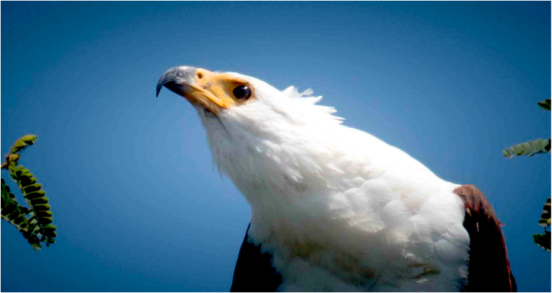
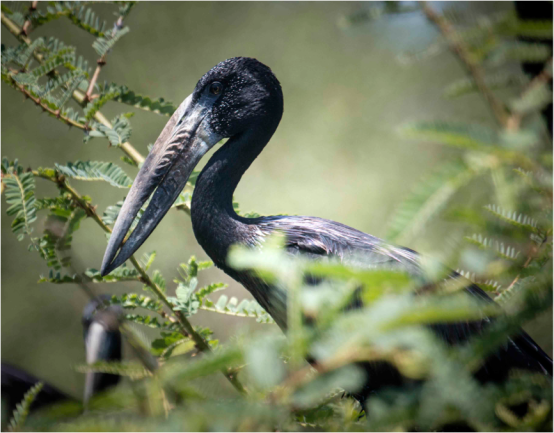
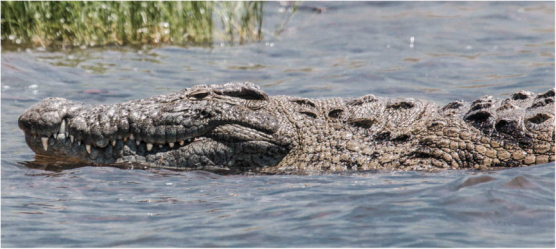
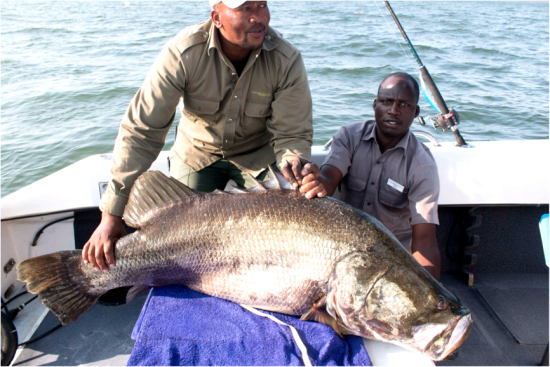
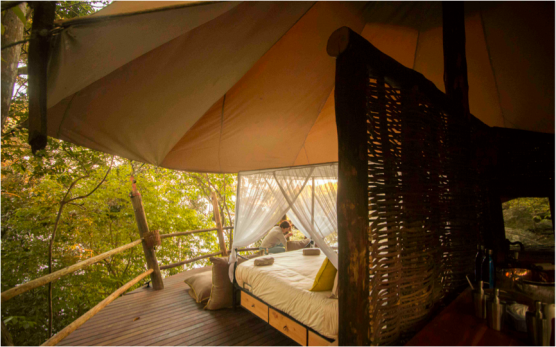
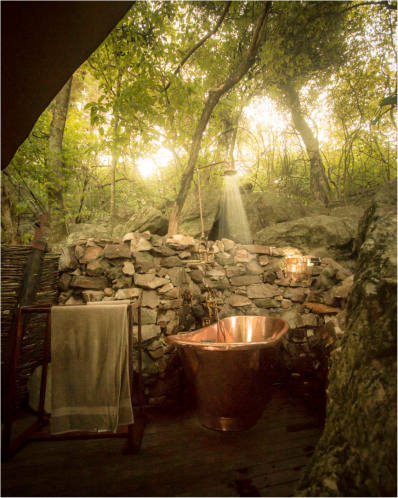
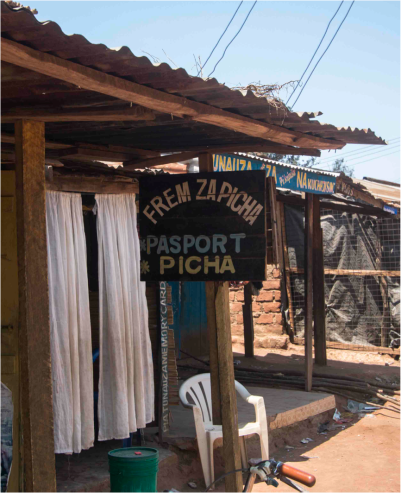
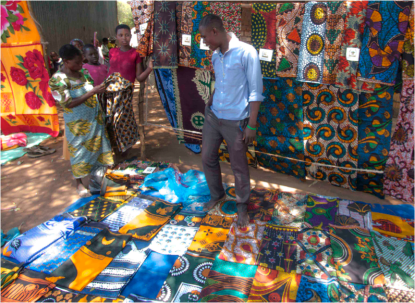
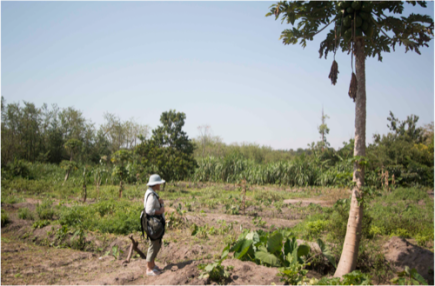




































Add comment
By Eric Frank
Rubondo Island National Park is an example of the foresight and visionary genius of late President Julius Nyerere — the man who led Tanzania to independence and onwards to become one of Africa’s leading conservation economies. Nyerere’s commitment to preserving the nation’s natural heritage is evident in the splendour of the country’s national parks and also in the preservation of the enormous natural wealth that lies above and below the waters of Lake Victoria — Rubondo Island National Park. The flight between Mwanza and Rubondo Island is approximately 25 minutes and in that time one can only marvel at the vast expanse of water and many islands that pass below the aircraft’s wings.
Sitting in front with the pilot is a must when you come in to land on the island. The approach to the airstrip, which looks like an extended cricket pitch carved out of the jungle, is over the lake and the touchdown is an unexpected jolt that leaves you wondering if you have just had a near death experience. Isn’t this just what you would expect when setting off on an adventure into the unknown?
Habibu Kissio—the senior guide at Asilia’s Rubondo Island Camp is at the airstrip to meet my wife, Tertia and myself and after a glass of chilled bubbles we leave for the camp that is only a few minutes away. The rocky road winds through a dense, dark forest that is constantly cut back to prevent it from taking over the road. In a shaft of light that breaks through the forest canopy we see a bushbuck ewe lift her head to watch us pass. On arrival at the camp we are met by Henk and Janine the camp’s managers, and shown to our chalet.
The large bedroom looks out over what appears to be a well-manicured lawn and then onto the shimmering surface of Lake Victoria. A small dhow and motorboat sway gently at their moorings and the water lapping at the shore sounds like we’re at the seaside. The only difference is that each wave looks and sounds exactly the same as the previous one. As we are escorted back to the chalet after dinner that night we discover that the team that keep the lawn trimmed weigh in at about a ton each, grunt continuously and have a reputation for killing more humans than any other animal on the planet. Fortunately they ignore us and we slip into the room as quickly as we can.
A golden peach-coloured sunrise introduces the new day. And it’s magnificent. The lake is flat and glassy—perfect for a cruise to get a closer look at Rubondo’s famous birdlife and crocodiles. Habibu meets us at the beach after breakfast. He introduces us to Deus the skipper of the boat. Deus is a rehabilitated poacher and therefore knows the waters around Rubondo Island intimately. Habibu tells us we are heading off to a bay where many species of birds gather and en route we’ll stop off at Crocodile Island. As we approach this nondescript rocky outcrop, some distance from the shore, the mother of all crocs oozes itself into the water, heads towards us and then quietly disappears under the surface. Tertia immediately moves towards the middle of the boat and I imagine she is thinking that falling overboard at that moment would dramatically cut short any plans she had for the future. The thought of it makes me shiver and I squeeze her hand reassuringly. The crocodiles virtually lie on top of each other and I can find no rational reason why so many should gather on this barren pile of rocks so far from the shore. Judging by their leering looks and toothy smiles, I speculate that they come here to hang out, soak up the sun and look as disgustingly evil as they possibly can.
Some time later, as we slowly cruise along the shoreline, I am amazed at the diversity and amount of birds we see. Egrets are by far in the majority, but we also see African Darters, Open Billed Storks, Kingfishers, Fish Eagles and some migrating European Bee Eaters that have stopped over on the island to rest. Habibu is an excellent guide. Both Tertia and I only have a rudimentary knowledge of birds and he succeeds brilliantly in getting us interested in learning more about them. I am particularly fascinated to learn that the male fish eagle is smaller than the female and that his call is more hysterical and high-pitched. In no time I can able to identify which is which by ear.
Before coming to the island I was asked to photograph the Camp’s new tree house that was soon due to be launched in the media. The cherry on top was that Tertia and I would also be the first guests to spend a night there. Getting to the tree house is easy. You simply walk to the end of the beach and follow a path that takes you to a wooden walkway. The walkway leads you up a gentle slope along the side of a hill and onto a wooden deck with safety railings and a generous canvas canopy. A king-size bed draped with a silky mosquito net holds centre-stage and the surrounding views of the forest canopy and Lake Victoria are exquisite. A woven wooden screen, that also serves as a headboard, separates the en-suite bathroom and flush toilet from the sleeping area. The bathtub is a showstopper. Made entirely out of gleaming copper, it looks as if it could have been created for the likes of Lady Gaga. Set against a wall of hand-packed rocks, the bathroom area seamlessly merges with the surrounding hillside environment. Hot and cold water can be accessed via a showerhead as big as a soup plate or vintage brass taps. As the sun sets I manage to photograph as much of the tree house as I can. In doing so I realise that a photograph will never do justice to this fantastical out-of this-world place. Then dinner arrives, with chilled sparkling wine, a full moon and a symphony of night sounds. In the very early hours of the morning I wake up to the sounds of branches breaking nearby. Elephants? Before I know the answer I drift off to sleep again.
My father was a keen sport fisherman and his love for things piscatorial lives on in me. Therefore, it goes without saying, that the thought of catching one of Rubondo Island’s monster-sized Nile Perch was high on my agenda for this trip. Once again Habibu, Deus and I set off, this time for Rubondo’s renowned fishing grounds. The most common technique for catching Nile Perch is to troll large colourful lures, normally used to catch tuna, about 20 metres behind the boat as it cruises at a slow speed. In no time the rod next to me bucks and bends. As I strike and set the hook, Deus cuts the engine. Unfortunately, the action is short-lived and the fish throws the lure and joins the legions of other fish I have failed to land successfully. Some time passed before we caught two reasonably sized fish in quick succession and released them back into the water. Then things went quiet, very quiet. The rolling of the boat, the reassuring rumble of the motor and the sun on my back conspired to lull me into a state of semi-conscious slumber. Suddenly Habibu shouted “fish!” I snapped upright and grabbed the bending rod. This time there was real weight at the end of the line and it didn’t budge. I turned to Habibu and suggested we had snagged a rock or a submerged tree. He half-smiled and in his quiet, soft-spoken manner reassured me it was a fish. Then all hell happened at once, the rod nearly leapt out of my hands and line peeled off the reel at a blistering pace. “Fish my arse,” I yelped. “It’s a bloody battle tank!” Bringing the fish to the boat took time and when I eventually caught sight of it I gasped. It was monstrous! With a lot of effort we hauled it onto the boat where it was measured. I asked Deus and Habibu to hold it so that I could take a photograph. It is probably the best bad picture I have ever taken because I simply couldn’t get back far enough to fit all the stars of the show into the frame. (Habibu my friend, I sincerely apologise for cutting off the top of your head). We then released the fish back into the water and I did the first thing real men do under such circumstances —I had a beer!
Supplies destined for Rubondo Island Camp are delivered weekly in Muganza the nearest mainland town to the island. These are then fetched by boat and brought back to the camp. Asilia owns a vegetable garden in Muganza and a local gardener grows fresh vegetables, herbs and fruits for the camp’s kitchen. Tertia and I decide to join Michelle Attala on an excursion to the garden and, because Saturday is market day in the town, we’ll explore that too. The boat ride is relatively short and we’re there in no time. The vegetable garden is larger than I imagined and the soil is dark and rich. Despite the fact that most of the crops are not ripe and ready to be harvested we still manage to collect tomatoes, lettuce, parsley and rocket. The Saturday market however is an entirely different experience. It appears that few foreigners visit Muganza and Tertia, who shows more than a passing interest in purchasing some wax print fabrics, is a hit with the fabric stall owners. Shopping in an African market takes decisiveness. If you show uncertainty you will be bombarded with a host of new options to buy and your entire purchasing strategy falls apart. On occasions when this happens, Tertia suddenly (and very dramatically) asks me what I think. This draws the attention of the stall owners onto me. While I ponder, fuss and compare the merchandise she uses the time to make up her mind. Finally we leave the market with two lengths of fabric and head back to the boat. It is our last day on Rubondo Island and tomorrow Tertia flies home and I leave for Olakira Camp in the northern Serengeti.
We spent a magical week at Rubondo Island Camp. The location and accommodation is perfect for exploring the island and the management and staff are warm, welcoming and helpful. Rubondo Island National Park covers an area of 457 km² (including the main island, surrounding water and 11 small islets). 85% of the island is covered by dense forest and the balance comprises of savannah, papyrus swamps and open woodland. Wildlife includes elephant, giraffe, hippo, crocodile, sitatunga, bushbuck, suni, wild chimpanzees, black and white colobus monkeys and over 200 species of birds.
A one-ton lawnmower and manure spreader
The African Darter (a rare visitor to Rubondo Island)
Early morning view of Lake Victoria from our bedroom
Rubondo Island Camp Accommodation
European Bee Eaters
Heroic Fish Eagle
The amazing Open Billed Stork (the gap in his beak helps him crush freshwater mussels)
Butter couldn’t melt in that mouth
Habibu, Deus and the Battle Tank
The Tree House bedroom
The Tree House en-suite bathroom and tub
Muganza photographic studio
Fabric emporium
The Asilia Vegetable garden